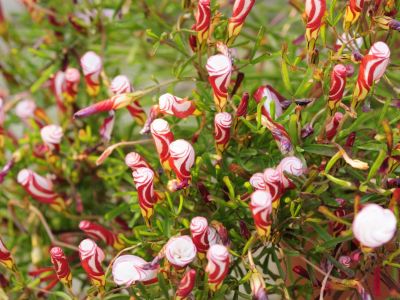Candy cane oxalis plants are botanically called Oxalis versicolor, meaning changing color. Candy cane oxalis flowers are red and white, hence the name. In early spring, trumpet shaped blooms appear, even on young plants. Gardeners in some areas may find blooms on the plant in late winter. Flowers of the candy cane oxalis plant appear white once the trumpets have opened, as the red stripe is on the bottom of the petal. Buds of the candy cane oxalis often close at night and in cool weather to again reveal the candy cane stripes. Attractive, clover-like foliage persists even when the small shrub is not in bloom.
Growing Candy Cane Sorrel
Growing candy cane sorrel is simple. Candy cane oxalis flowers are native to capes of South Africa. This attractive member of the Oxalis family is sometimes forced in greenhouses for ornamental, holiday blooms. When growing candy cane sorrel outside in the garden, the plant will exhibit blooms through most of the spring and sometimes into summer, depending on the location where it grows. As with most members of the ornamental Oxalis family, the candy cane oxalis plant goes dormant in summer and begins a period of regrowth in fall. Info about candy cane oxalis plant says it is hardy in USDA plant hardiness zones 7 through 9, though it can grow as an annual in lower zones. Candy cane sorrel bulbs (rhizomes) can be planted at any time the ground is not frozen.
Caring for Candy Cane Oxalis
Growing candy cane sorrel is a simple process. Once candy cane sorrel bulbs are established, occasional watering and fertilization is all that is required when caring for candy cane oxalis. You may remove dying foliage when the plant dies back for the sake of appearance, but it will wither on its own. Don’t despair that the candy cane oxalis plant is dying; it is just regenerating and will once again reappear in the garden.
